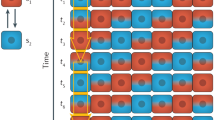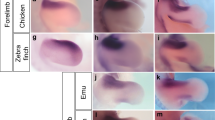Abstract
IT is important for an understanding of pattern formation in development to know how precisely the patterns are specified. One type of mechanism may involve the specification of positional information in the form of some graded cellular parameter. This is interpreted by cells in terms of molecular differentiation according to their genome and past history. How precisely must positional information be specified or interpreted1? To make the situation more concrete, one can consider a line of 50 cells, the size of a typical positional field, and ask how accurately the position of any one could or need be specified. If one half were to be different from the other how accurately would the boundary be located? It is very difficult to obtain such data on the precision of development at the cellular level. One of the few situations where this type of information is available is in sea urchin development in which about 50 of the 1,000 cells of the blastula become primary mesenchyme. This process is rather imprecise with a coefficient of variation of about 10%2 and corresponds with an overall impression of the lack of precision in sea urchin development1,3. Maynard-Smith4 has provided an original discussion of continuous and quantized variation in adult structures but does not directly relate them to developmental processes. While geneticists have been conscious of what has been termed developmental noise5 or special environmental variance6, their studies, too, are not easily relatable to developmental processes at the cellular level. One approach is of particular interest, however, and that is the comparison of bilaterally symmetrical structures7, for differences between these could provide an estimate of the precision of development. Most studies of this type have been carried out on Drosophila and made use of numbers of bilateral structures such as bristles and ovarioles, though it has been briefly reported8 that the coefficient of variation of the ratio of wing lengths is 0.40%.
This is a preview of subscription content, access via your institution
Access options
Subscribe to this journal
Receive 51 print issues and online access
$199.00 per year
only $3.90 per issue
Buy this article
- Purchase on Springer Link
- Instant access to full article PDF
Prices may be subject to local taxes which are calculated during checkout
Similar content being viewed by others
References
Wolpert, L., Current Topics in Develop. Biol., 6, 183 (1971).
Hörstadius, S., Wilhelm Roux. Arch. Entwick. Org., 135, 40 (1936).
Gustafson, T., and Wolpert, L., Intern. Rev. Cytol., 15, 139 (1963).
Maynard-Smith, J., Proc. Roy. Soc., B, 152, 397 (1960).
Waddington, C. H., Strategy of the Genes (Allen and Unwin, London, 1957).
Falconer, D. S., Introduction to Quantitative Genetics (Oliver and Boyd, Edinburgh, 1960).
Mather, K., Heredity, 7, 297 (1953).
Reeve, E. C. R., and Robertson, F. W., J. Genet., 51, 276 (1952).
Summerbell, D., Lewis, J., and Wolpert, L., Nature New Biology (in the press).
Author information
Authors and Affiliations
Rights and permissions
About this article
Cite this article
SUMMERBELL, D., WOLPERT, L. Precision of Development in Chick Limb Morphogenesis. Nature 244, 228–230 (1973). https://doi.org/10.1038/244228a0
Received:
Published:
Issue Date:
DOI: https://doi.org/10.1038/244228a0
This article is cited by
-
Alligator mandibular development during long term organ culture
In Vitro (1983)
-
Scale of body pattern adjusts to available cell number in amphibian embryos
Nature (1981)
-
Cell cycle and experimental pattern duplication in the chick wing during embryonic development
Nature (1980)
-
Ultrastructural changes in the distal wing bud of the chick embryo after removal of the apical ectodermal ridge
Wilhelm Roux's Archives of Developmental Biology (1979)
-
Normal and experimental variations in proportions of skeleton of chick embryo wing
Nature (1978)
Comments
By submitting a comment you agree to abide by our Terms and Community Guidelines. If you find something abusive or that does not comply with our terms or guidelines please flag it as inappropriate.



